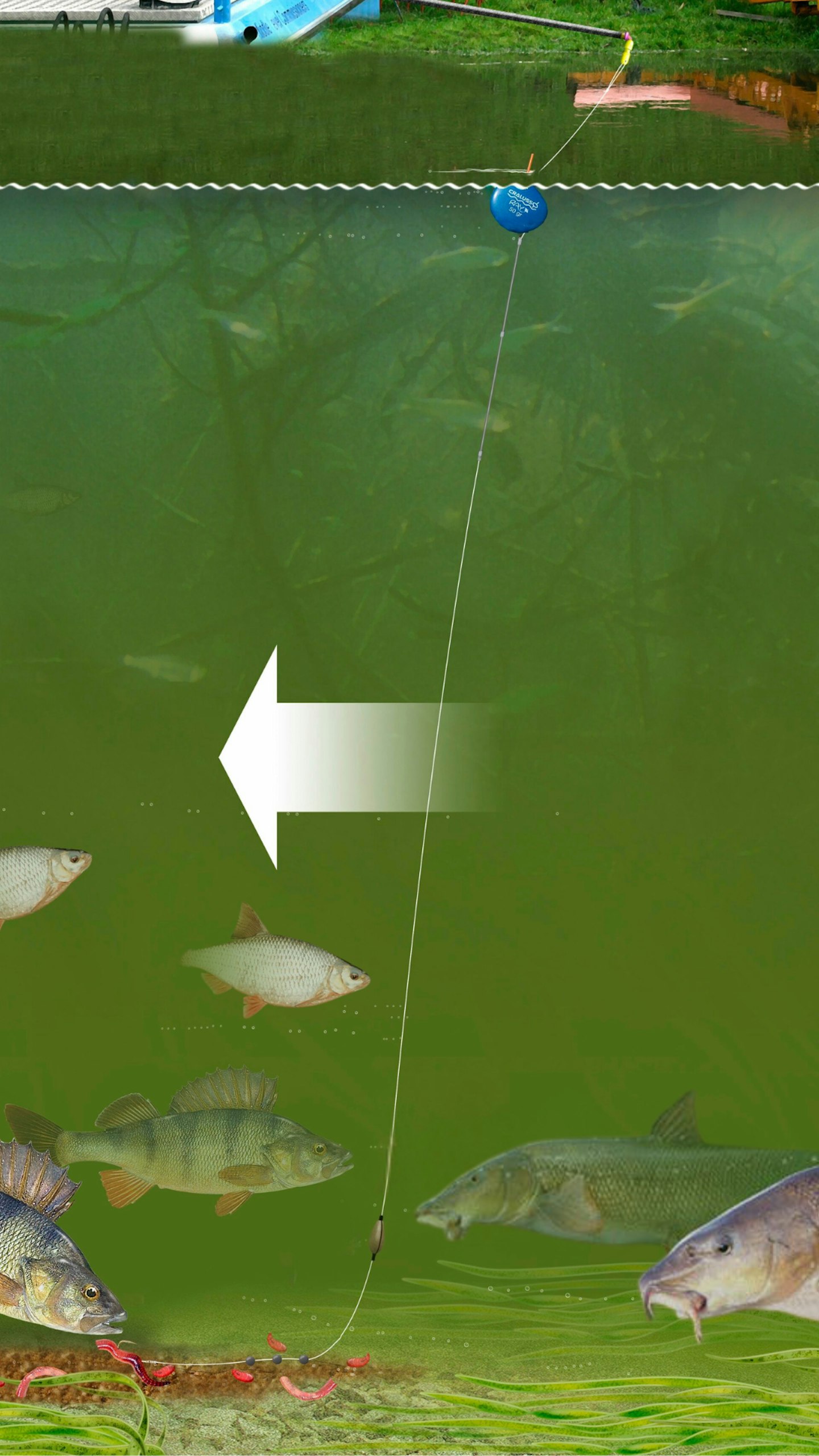Fishing with a pole on a river is a highly effective technique for catching many different species of fish. This method allows you to present your bait in a natural manner and far more accurately than you can fish with rod and line. On trickier days when every bite counts, the pole can be the answer to getting the most from your swim.
When pole fishing on the river, choosing the right rigs is essential, and the one you select should be based on the species you're targeting, the river's conditions and the bait you'll be using. This article outlines the best pole fishing rigs to consider for your next river fishing session.
USE THE BEST FISHING POLESFOR FISHING ON THE RIVER TO MAXIMISE YOUR SUCCESS.
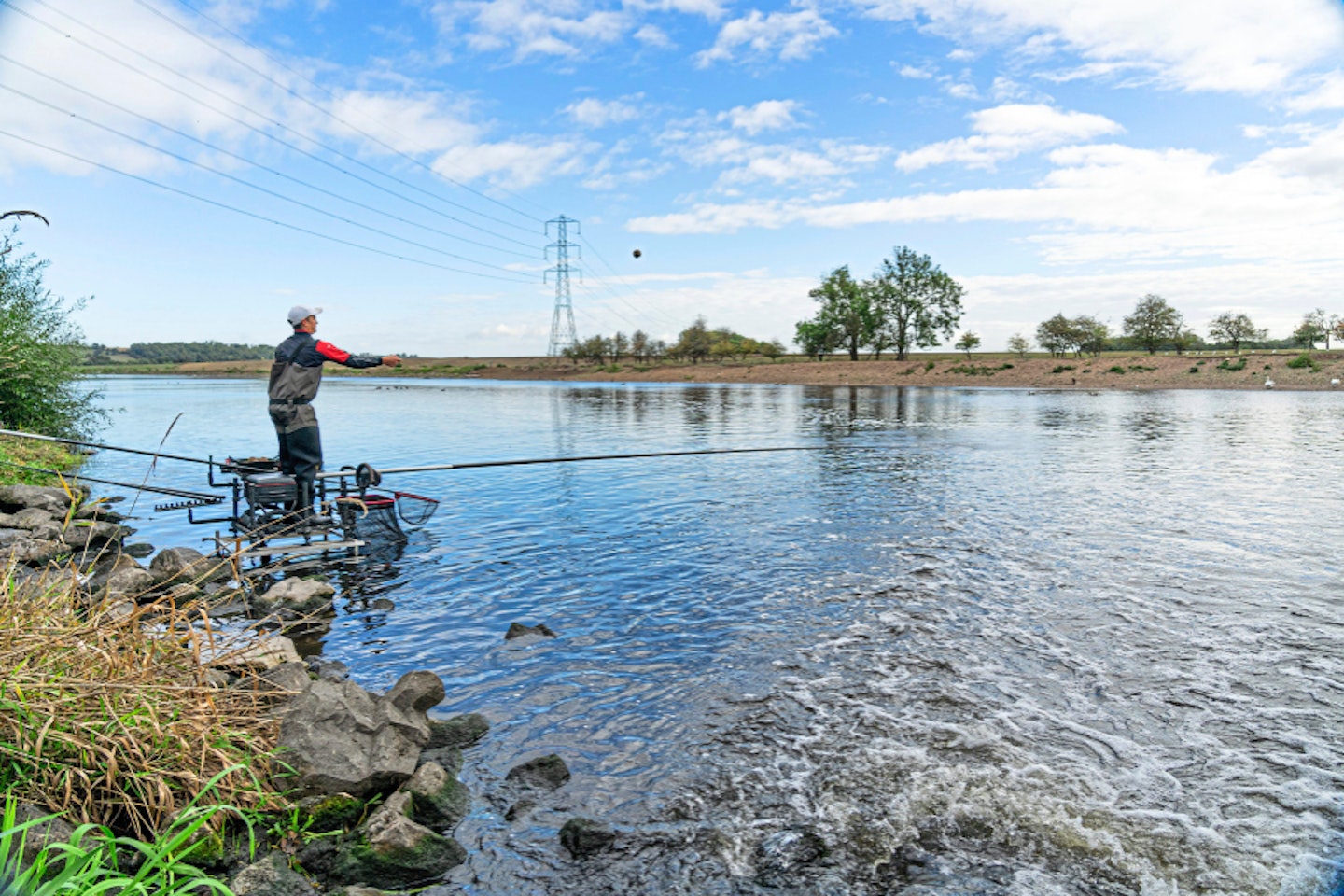
Maggot and caster rig
This versatile rig can be used for a number of different baits including maggots, casters, pinkies and worms. It's my got to rig if I am unsure of what I may encounter or just want to catch anything that might be present in my swim.
For the rig, I prefer a round bodied float weighing 0.8g (4x20) with a wire stem and 1.7mm bristle. The float size should match the water's depth.
I choose a mainline of 4lb (0.14mm), with the rig's shotting pattern starting with an olivette (0.6g) placed 2ft (60cm) above the hook. Additionally, use three No.9 shot evenly spaced between the olivette and the top of the loop-to-loop connection of the 8" (20cm) 2lb (0.10mm) hook length.
For the hook opt for a light wide gape hook in a size 18 for maggots and casters, step up to a 16 for worms and down to a 20 for pinkies. This rig works well when feeding balls of groundbait and should be fished a 1 to 2” overdepth and allow the rig to move with the flow periodically holding the rig back and resetting.
RIVERBANKS CAN BE UNEVEN BUT USING ONE OF THE BEST FISHING SEATBOXES WILL HELP YOU REMAIN STABLE.
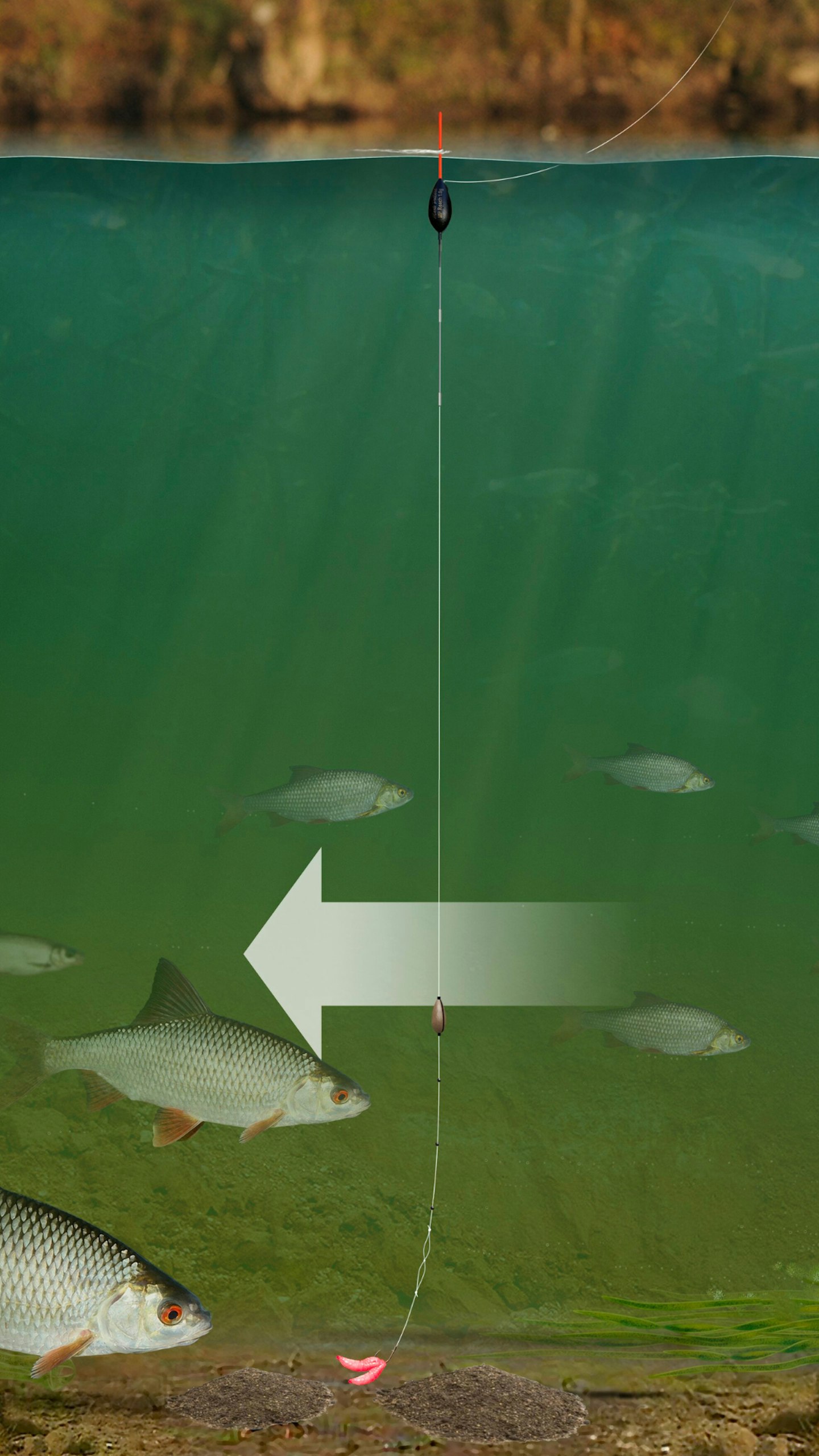
Hemp and tare rig
This rig can prove highly effective on rivers during the autumn months, offering a fantastic day of fishing for roach.
For the rig, I prefer a slimline, body-up float weighing 0.8g (4x20) with a carbon stem and a 1.5mm bristle. The float size should match the water's depth; as a general guideline, use 0.1g for every foot of water. For example, in 8 feet of water, a float weighing approximately 0.8g would be suitable.
I choose a mainline of 4lb (0.14mm), with the rig's shotting pattern starting with an olivette (0.6g) placed 2ft (60cm) above the hook. Additionally, use three No.9 shot evenly spaced between the olivette and the top of the loop-to-loop connection of the 8" (20cm) 2lb (0.10mm) hook length.
For hooks, opt for a fine wire long shank size 16 for tares and an 18 for hemp, starting by fishing about 3 to 4 inches off the bottom. You can adjust this depth to find the depth that the fish are happy at.
THE BEST FISHING CATAPULTS ARE ESSENTIAL FOR FEEDING HEMP AND TARES.
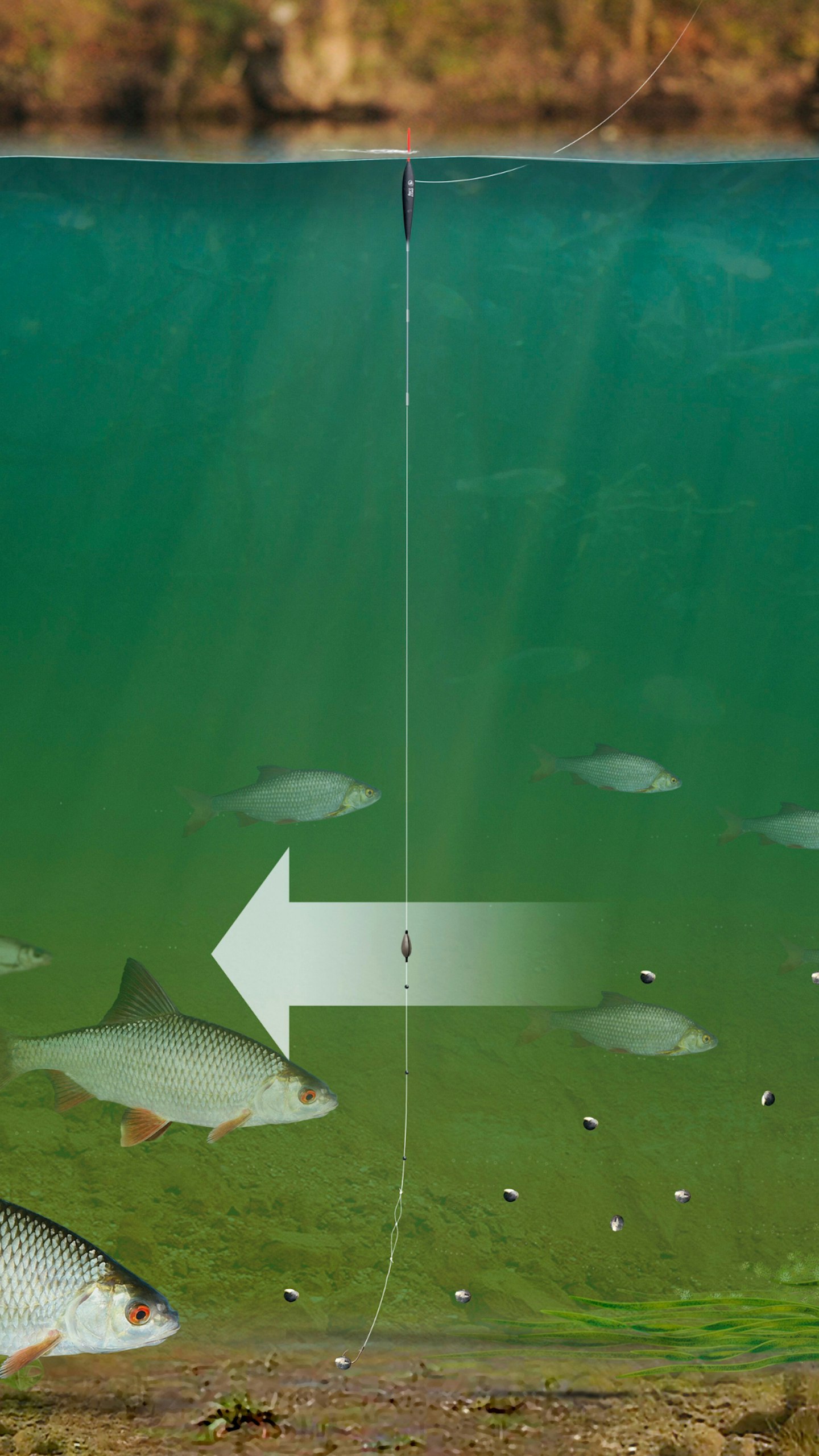
Bread punch rig
When it comes to bread punch fishing on rivers, it's often beneficial to use a slightly heavier float than usual, particularly when the current demands a rapid sinking of the bait.
For this rig a float with a round body of 0.6g (4x18) with a wire stem and 1.7mm bristle is my first choice. However, don't be afraid of using a heavier float when the circumstances warrant it. For instance, when faced with depths of 8 to 10 feet and a strong current, a 1.0g float is heavy enough. On the other hand, for shallower waters around 4 feet and a slower current, it's usually best to scale down to a 0.6g float.
As for the mainline, 4lb (0.14mm) is my choice. For the shotting pattern, an olivette (0.4g) placed 2ft (60cm) above the hook is ideal. Plus, consider evenly spacing three No.9 shot between the olivette and the top of the loop-to-loop connection of the 8" (20cm) 2lb (0.10mm) hook length.
Remember, most fish are likely near the bottom, feeding on the liquidised bread you've fed, so there's no need to aim to catch through the water. The bait should be fished slightly off bottom, ideally around 1 to 2 inches.
LET US EXPLAIN HOW TO GET THE BEST OUT OF BREAD WHEN FISHING ON RIVERS.
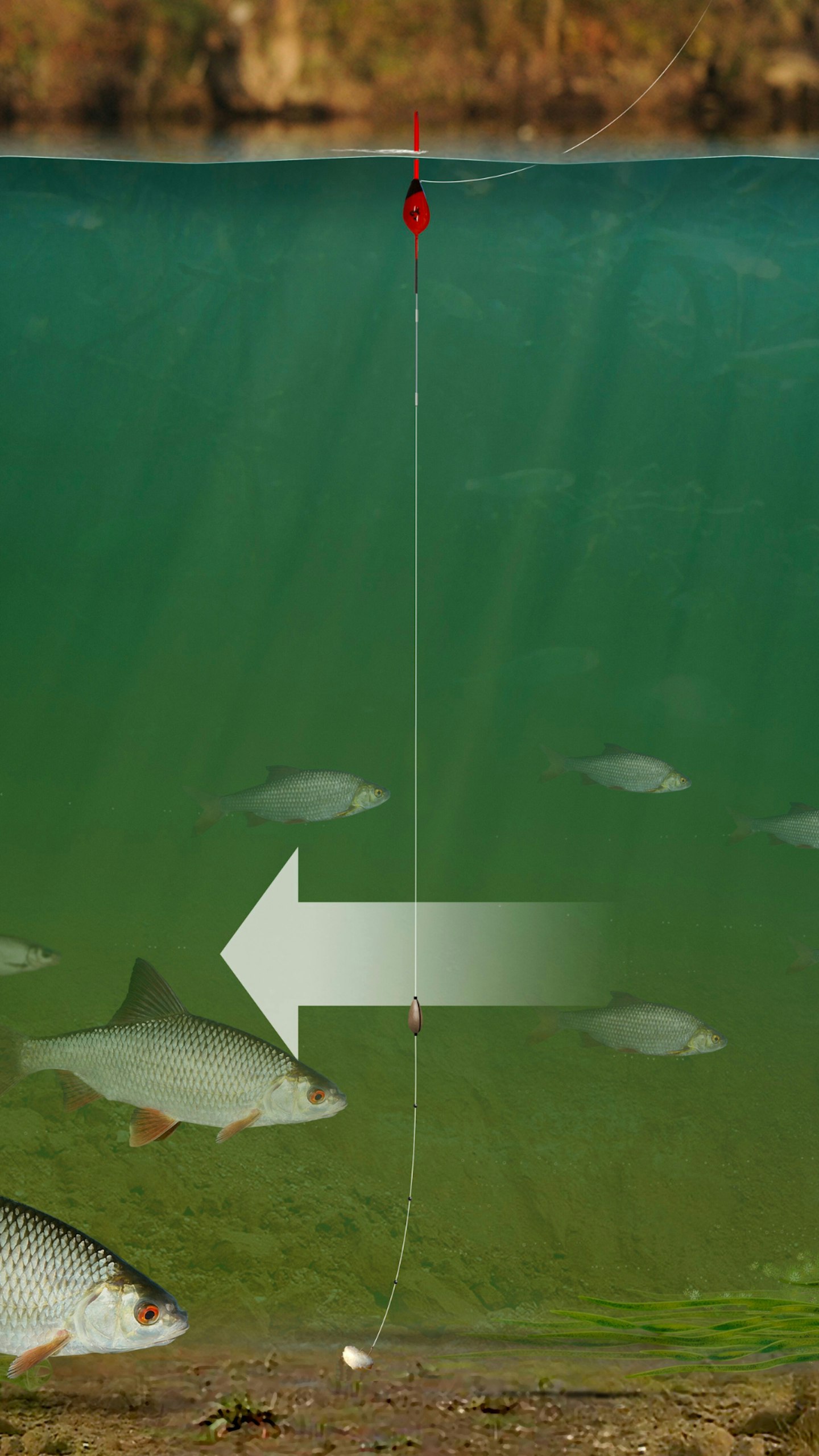
Flat float rig
The flat float is a flexible and stable rig that lets me either hold the bait totally still or inch it down the swim slightly. Ideal for targeting larger fish like chub and barbel with big baits like meat, lobworms and dendrobaenas, and pellets.
My go to choice of flat float would be 3g lollipop style flat float with a wire stem and a 2mm bristle, the shape of the float offers so much less resistance against the flow offering a far more stable presentation compared to other floats.
Choice of mainline would be 6lb (0.18mm), with an olivette (2.75g) placed 6" (15cm) above the loop to loop connection of the hooklength, with 3 No 8 shot placed at 1" intervals above the hook length. The hooklength is 6" (15cm) of 5lb (0.16mm) line to a strong size 12 hook.
The rig should be set 6" overdepth, with the aim of the droppers laying on the bottom and the olivette positioned 6" off the bottom. This allows the rig to be held stationary and by lifting and dropping the rig can be worked down the swim.
THE BEST MARGIN POLES CAN BE A GOOD TOOL FOR FISHING FOR BIGGER FISH ON A RIVER.
